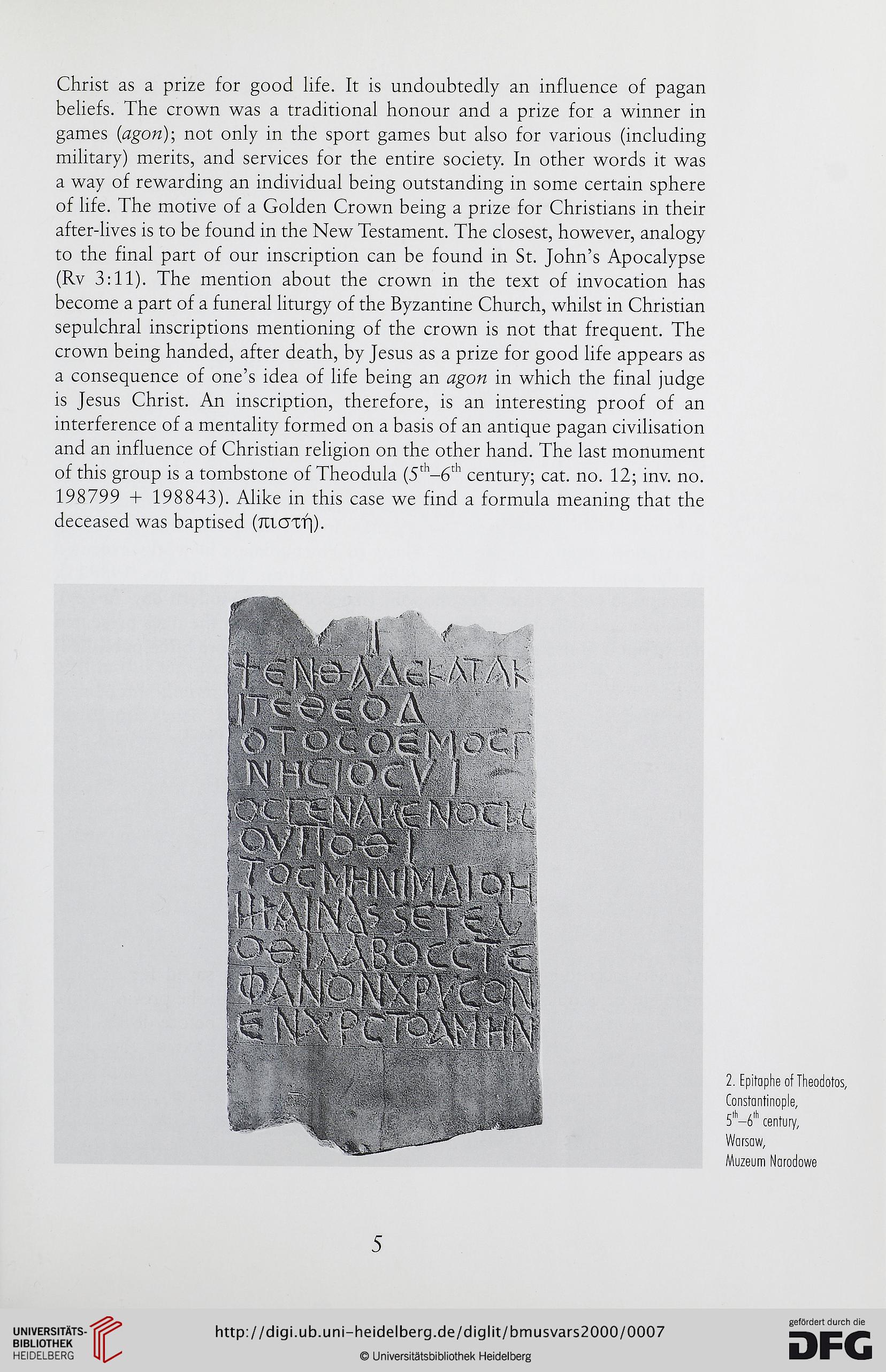Christ as a prize for good life. It is undoubtedly an influence of pagan
beliefs. The crown was a traditional honour and a prize for a winner in
games (agon); not only in the sport games but also for various (including
military) merits, and services for the entire society. In other words it was
a way of rewarding an individual being outstanding in some certain sphere
of life. The motive of a Golden Crown being a prize for Christians in their
after-lives is to be found in the New Testament. The closest, however, analogy
to the finał part of our inscription can be found in St. John’s Apocalypse
(Rv 3:11). The mention about the crown in the text of invocation has
become a part of a funeral liturgy of the Byzantine Church, whilst in Christian
sepulchral inscriptions mentioning of the crown is not that freąuent. The
crown being handed, after death, by Jesus as a prize for good life appears as
a conseąuence of one’s idea of life being an agon in which the finał judge
is Jesus Christ. An inscription, therefore, is an interesting proof of an
interference of a mentality formed on a basis of an antiąue pagan civilisation
and an influence of Christian religion on the other hand. The last monument
of this group is a tombstone of Theodula (5th-6th century; cat. no. 12; inv. no.
198799 + 198843). Alike in this case we find a formula meaning that the
deceased was baptised (TtlGTT]).
2. Epitaphe of Theodotos,
Constantinople,
5lb-6,h century,
Warsów,
Muzeum Narodowe
5
beliefs. The crown was a traditional honour and a prize for a winner in
games (agon); not only in the sport games but also for various (including
military) merits, and services for the entire society. In other words it was
a way of rewarding an individual being outstanding in some certain sphere
of life. The motive of a Golden Crown being a prize for Christians in their
after-lives is to be found in the New Testament. The closest, however, analogy
to the finał part of our inscription can be found in St. John’s Apocalypse
(Rv 3:11). The mention about the crown in the text of invocation has
become a part of a funeral liturgy of the Byzantine Church, whilst in Christian
sepulchral inscriptions mentioning of the crown is not that freąuent. The
crown being handed, after death, by Jesus as a prize for good life appears as
a conseąuence of one’s idea of life being an agon in which the finał judge
is Jesus Christ. An inscription, therefore, is an interesting proof of an
interference of a mentality formed on a basis of an antiąue pagan civilisation
and an influence of Christian religion on the other hand. The last monument
of this group is a tombstone of Theodula (5th-6th century; cat. no. 12; inv. no.
198799 + 198843). Alike in this case we find a formula meaning that the
deceased was baptised (TtlGTT]).
2. Epitaphe of Theodotos,
Constantinople,
5lb-6,h century,
Warsów,
Muzeum Narodowe
5




